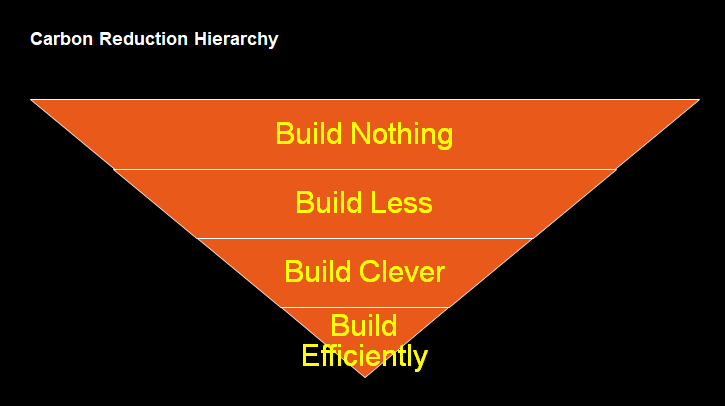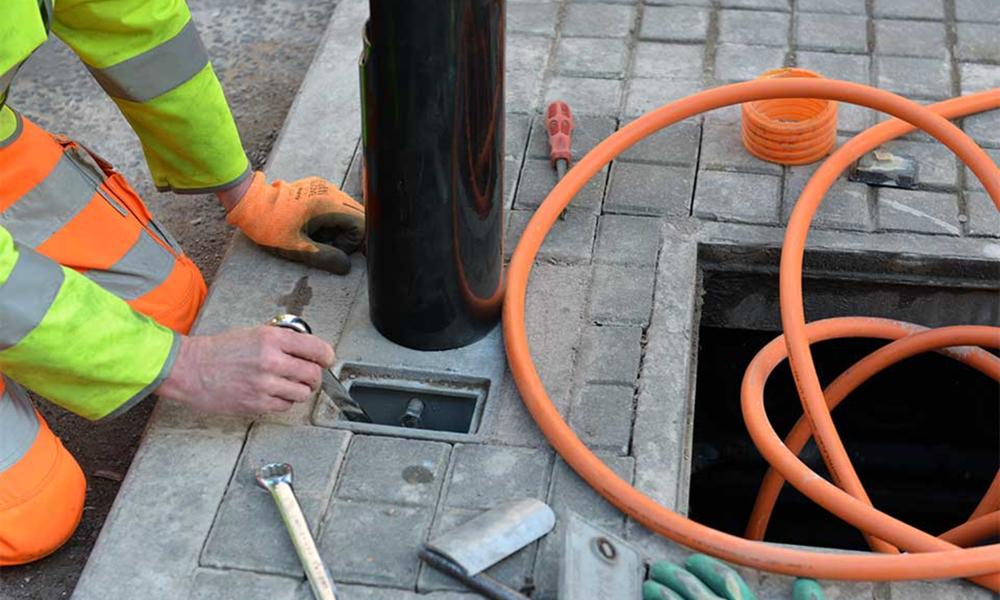Over the past decade, technology manufacturers have made great strides in reducing the energy consumption of ITS equipment, the switch to modern electronics and LEDs has had a transformative impact on electrical consumption of installations, with many types achieving 80% savings when compared to traditional equipment.

This process is also ongoing, as an example; with currently emerging LED products looking to achieve 1w traffic signal aspects, compared to 50w for traditional Halogen lamps or around 10w for many current LED products. However, in the coming few years reliance on electrical savings will not be sufficient in its own right. Steve Elderkin the director of environmental sustainability at National Highways recently said that “Achieving net zero will be part of everyone's role”. So, we will need to continue to reduce the environmental impact of our installations to a level that aligns with the goals set in the COP26 Glasgow Climate Pact in November 2021, and although the Net Zero requirement is not mandated until 2050, many organisations are either already Carbon Neutral (or working actively towards this), with a view to attain Net Zero by 2040, such as National Highways maintenance and construction goal. This also needs to be viewed in the context of the fact that road transport as a whole, accounts for over 10% of global greenhouse gas emissions, and the total emissions are rising faster than any other sector. Because of this, the transition to Zero Emission Vehicles (ZEV) is of vital importance, but Intelligent Transport Systems (ITS) infrastructure cannot rely on this to offset overall savings in the sector, the ITS element also needs to step up to this challenge. Infrastructure as a whole is responsible for around 53% of the world’s greenhouse gas (GHG) emissions, of which, nearly 20% is attributed to the embedded emissions from infrastructure, i.e. the manufacturing, construction and lifecycle management of infrastructure assets. We have seen that significant savings have already been (and continue to be) made on the operational side of our sector, but the embedded carbon caused by the civils construction and the manufacture/installation of equipment needs to be addressed. As an illustration of the impact that construction has, if the cement industry is compared against national emissions, it would be the third largest global emitter of carbon behind China and the United States. Unfortunately though, with the pace of technology change which is anticipated for the sector over the coming decades, the certainty the industry had for planning infrastructure requirements is now far more problematic, leaving it difficult to establish a reliable roadmap for equipment requirements in coming years. This stems from the anticipated benefits that both Connected and then Automated Vehicles will provide. Because of this, the ability to build-in longevity and to future proof installations, is now more difficult to justify because of the long-term uncertainty about the requirement for equipment to be installed in our roadsides. The paradox to this though, is the growing anticipation and reliance on technology to overcome issues, such as capacity constraints, to provide alternative solutions to the construction of new features, such as new or widened roads.

To facilitate achieving carbon savings, a carbon reduction hierarchy should be adopted, this provides a framework around which, both strategic and specific decisions can be made. Build Nothing - Therefore, the starting point to reduce carbon begins with assessing if new infrastructure is actually required. Could the operation of existing assets be optimising or repurposed to achieve the desired outcomes instead of building a new installation? Build Less - If we do need to construct something, can we rationalise it to reduce the impact. As an example for traffic signals, this will look to justify the requirements for each new pole and cabinet. This will need to balance user safety of the finished installation, but by not ending up with a surfeit of equipment this obviously also provides benefits of minimising street furniture clutter. Build Clever - One of the biggest areas for improvements in infrastructure construction is the adoption of Circular Economy techniques within the materials supply-chain. Traditionally, the Linear Economy would extract natural resources, turn these into a product and then discard them at the end of life. We are not going to get away from using materials like concrete, but by using non-virgin materials, preferably renewable, in these, results in considerable carbon savings. Build Efficiently - Wastage of materials and resources is an endemic problem when constructing infrastructure. It is still common for a large proportion of brought in materials to be wasted and not used in the finished asset. Although the traffic signals sector was an early adopter of using modular and factory produced equipment, this is an area where more thought will need to be applied. As an example, precast concrete products can provide confidence in repeatable quality owing to being produced in a controlled factory environment, achieving a huge reduction in waste.

We need to consider how the life span of existing infrastructure can be extended when equipment updates and replacements are required. Because of the earlier foresight of practitioners across the industry, most traffic signal installations use fully ducted systems with pole retention sockets, so signals renewals can usually make use of these with minimal need for replacement. Specifying low carbon products should be integrated into projects from the very start, rather than being afterthoughts. Alternative concrete mixes are becoming more readily available, using recycled aggregates and alternatives to Portland cement, it is possible to produce concrete with 80% lower embodied carbon compared against traditional specifications. Alternatives to traditional steel poles can offer much longer life expectancies at moderate additional costs, for example, expected life spans of 50 years are often claimed for aluminium poles. Although aluminium made from bauxite is much more energy intensive than steel production, many aluminium products are actually made from recycled materials which is far more energy efficient. Designers will need to think about how they design, so that at end of life, installations are easier to disassemble and demolish, facilitating efficient recycling of materials. Polypropylene (PP) chamber boxes are recyclable, but this is very difficult if they are encased in concrete. Also, where precast concrete products are used, these often incorporate lifting eyes, so these could also be used to remove them, allowing the possibility for these products to be used again elsewhere or to be efficiently recycled at a specialist centre. It is expected that technologies will evolve which will provide even greater emissions reductions over coming years. As this sector matures leaner construction techniques which reduce waste, new end-of-life materials and waste management processes will make use of more digital solutions. But we can’t just sit back and wait for these to come.The replacement of diesel-powered plant and generators will also make a contribution to reducing the footprint of our construction projects, whilst also reducing noise, nuisance and pollution to nearby residents. In order to quantify and report the success of carbon reductions, the use of a carbon calculator will allow designers to make informed decisions for their projects. The direct integration with BIM software and Bill of Quantities (BoQ), enable efficient calculations to be undertaken up to 90% faster than using manual methods.
150x150.png)